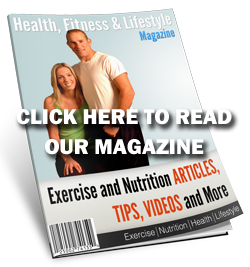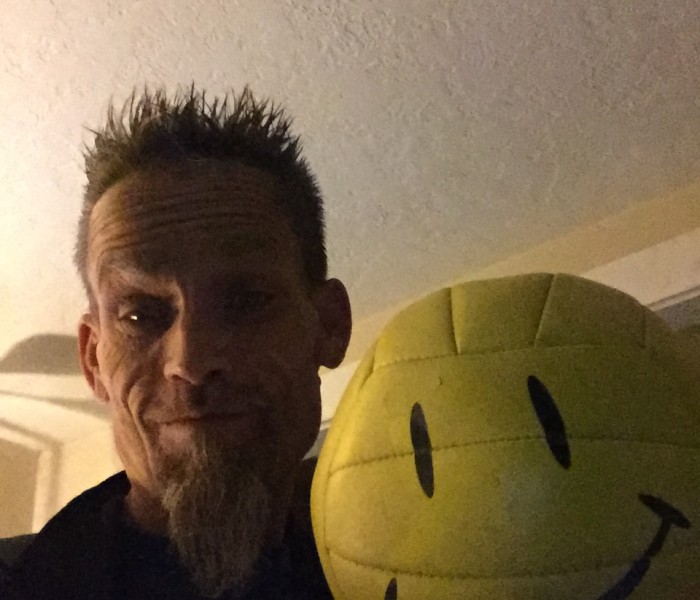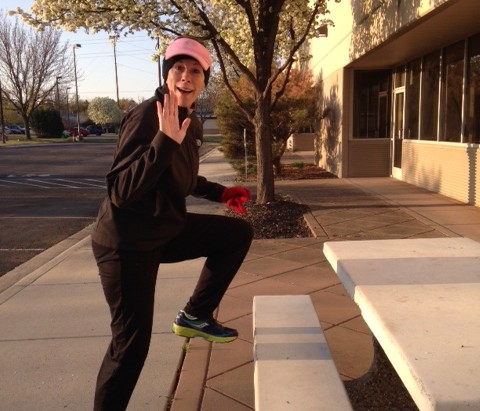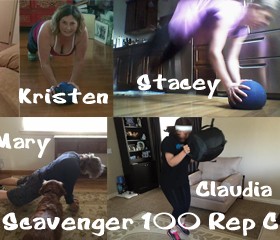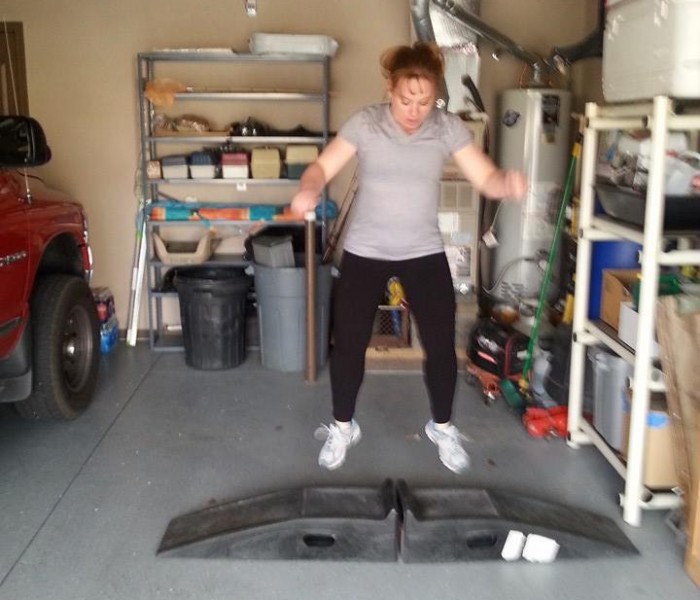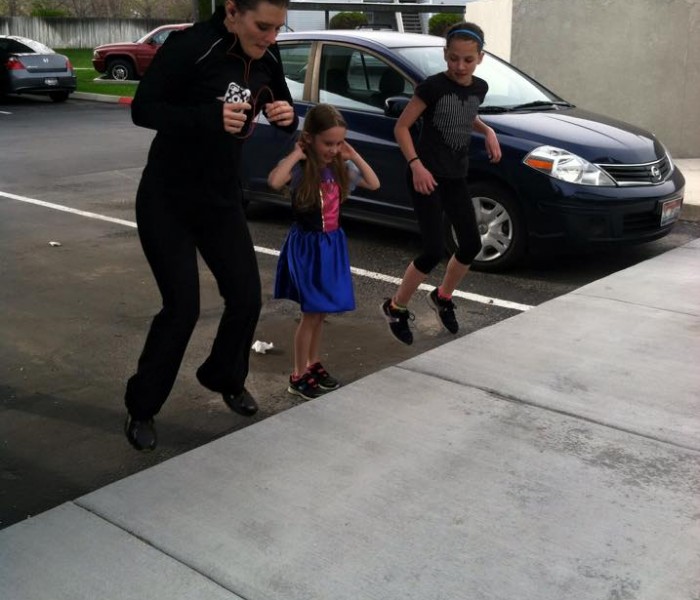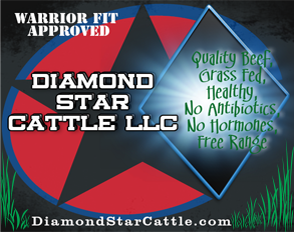Originally posted at: http://www.nerdfitness.com/

So you’re having trouble working out consistently?
I get it.
Life is busy and hectic. You probably wear multiple hats in your life.
Hopefully, one of them is a pirate hat:
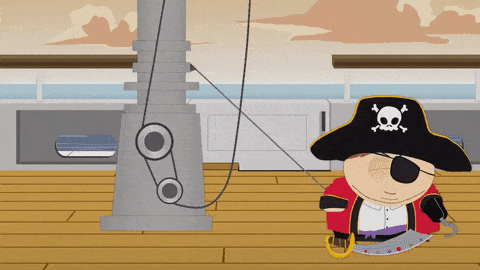
So if you are having trouble exercising regularly, know that you aren’t alone.
Not being able to work out consistently is one of the top issues facing our clients in Nerd Fitness Coaching. Luckily, there are some tips and tricks that help them, which we’ll share with you right now too.
Here’s what we’ll cover today:
- Step 1: Why you miss workouts (and why it’s okay).
- Step 2: Building a (specific and realistic) workout plan.
- Step 3: Why “all of nothing” hurts workout consistency.
- Step 4: The key to getting in regular exercise (make it fun).
- Step 5: How to build workout accountability.
- Step 6: Exercise and workout motivation (and the problems with it).
- Step 7: How to find time to work out.
- How to start working out consistently (next steps).
Step 1: Why You Miss Workouts
As I mention in the video above, it’s okay to stumble – everyone misses a workout now and again.
Life happens:
- Your job might need you to stay late.
- Maybe your spouse can’t pick up the kids today.
- Or perhaps you just lost track of time while playing video games.

These things happen, so don’t beat yourself up whenever you miss a workout.
“Wait, wait, wait Jim! I thought this article was about consistency – then you start off saying it’s OK to miss a workout?”
What I’m saying is to not beat yourself up over it. I’ll see people be so tough on themselves for one missed workout, that it spirals downward and then they’re doing NO workouts.
It’s unnecessary, and it’s not sustainable.
Here’s something I remind my clients: If being tough on yourself helped with workout consistency, it would’ve helped by now.
So first of all, forgive yourself.

Then, I share with them a saying we have here at Nerd Fitness:
“Never Two in a Row.”
That means aim to not miss two workouts, back to back.
It’s a mantra you’ll hear throughout the Rebellion (our community!).
Here’s the justification: as I mentioned, missing one workout is nbd.
However, two workouts in a row could be the start of a trend. If you’re not careful, after a few missed workouts, you could just stop exercising altogether.
That’s the real danger.
So we aim to not allow the trend to start in the first place.
Takeaway: If you miss a workout, it’s fine. Just try not to miss the next one.
Step 2:Building a Workout Plan

Here’s a great quote from Benjamin Franklin:
If you fail to plan, you are planning to fail.
When it comes to working out consistently, we need to define what “consistently” actually means.
For that, it’s time to build a workout routine.
As Coach Staci mentions in the video above, we want to focus on three key questions when programming our training:
- What type of workout are you doing?
- When do you plan on doing your training?
- Where will this workout take place?
All three questions are important, but we’re going to focus on “when” right now.
Determining “when” you’ll train is easily the most important step for working out consistently.
That’s why I want you to place your workouts in your calendar!
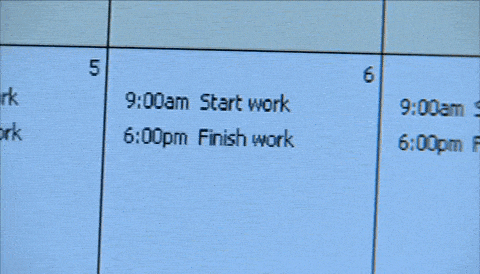
Schedule your workout like it’s the most important meeting of the day!
(A reminder that you ARE important!)
That’s what I have my clients do in our 1-on-1 Coaching Program. It goes a long way to helping them stick to their workout schedule.
So if you plan on training first thing at 8am, have a calendar reminder go off at 7:50am.
It’ll make a difference. I promise.
What days should be workout days?
For that, I have a couple of resources to share with you:
- How to Build Your Own Workout Routine. Our MASSIVE guide will teach you exactly how to create a training schedule, including what exercises to do and when to take rest days. If you want to get your hands dirty building your own workout, this is the way to do it.
- Nerd Fitness Journey. Our fun habit-building app will tell you exactly when to workout, with video tutorials for every exercise covered. No need to create a plan, just open up the app and check your missions for the day. Plus, you’ll build your very own superhero as you go, which is totally sweet. You can try it out for free right below:
Step 3: Why “All of Nothing” Hurts Workout Consistency

Another one of the best things you can do to improve your workout consistency: have a backup plan.
Let’s say a pipe bursts at your gym, and it’s closed for the next few days.
Does that mean you should stop working out until they resolve their plumbing emergency?

It could be a while…
No!
It just means you’ll have to work out at home, in a nearby playground, or maybe you just focus on long walks for the next few days.
That’s why it’s always good to have a backup for any regular emergecny, like:
- If I can’t train at my gym, I’ll do bodyweight training at home.
- If it’s raining heavily and I can’t run outside, I’ll jump on the stationary bike in the garage.
- If I’m sore from a hard workout, today I’ll just do some light yoga.
Remember, just because your initial plan falls through, doesn’t mean you have to completely throw in the towel.
Or as I jokingly tell my clients, just because one tire goes flat, doesn’t mean you should slash the other three.
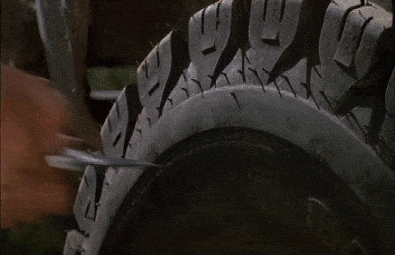
Just do the best you can to get back on the road.
Step 4: The Key to Getting in Regular Exercise
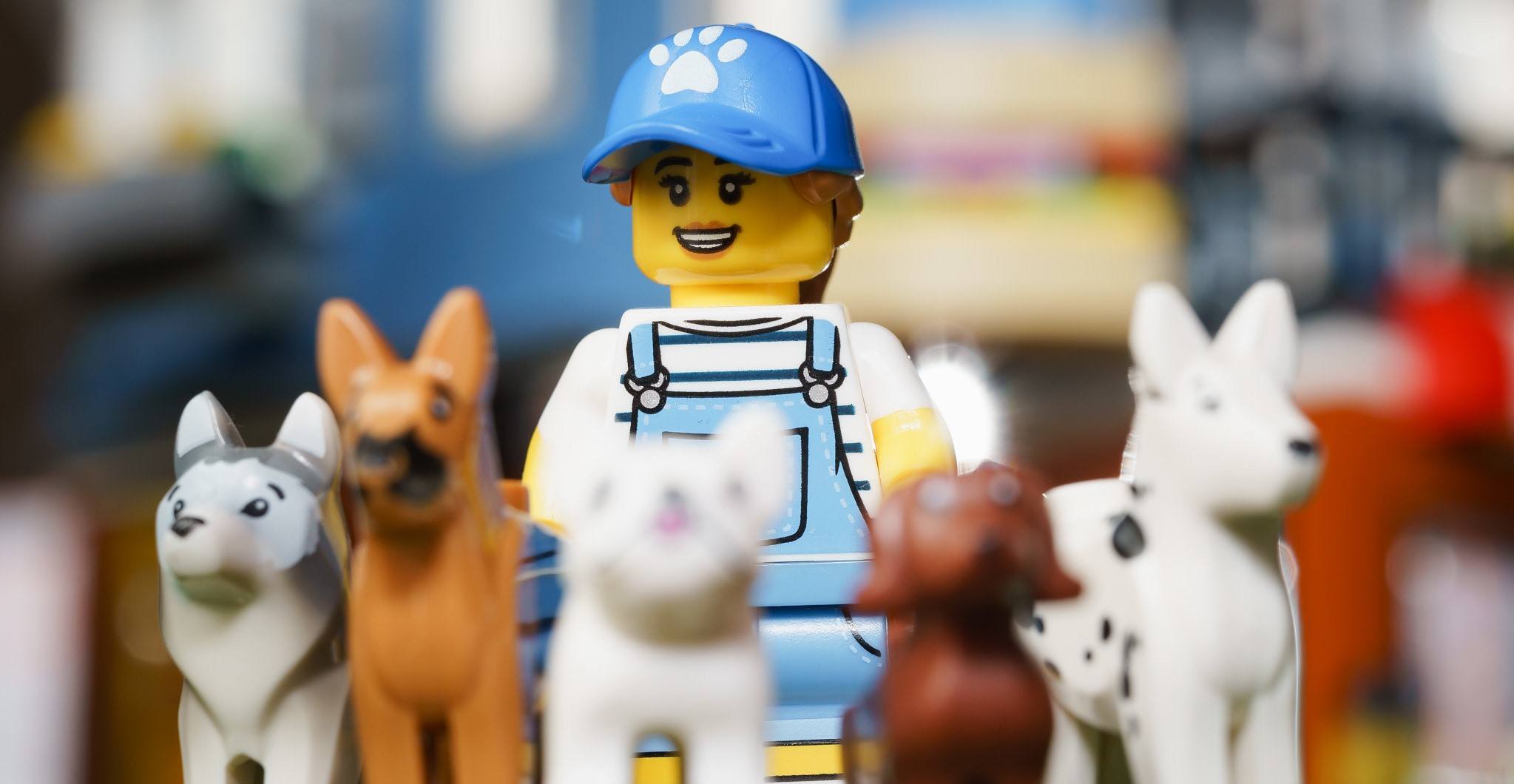
If I have one single piece of advice on how to get in more daily movement, it would be this: do something you enjoy.
Every workout doesn’t have to be a slog.
You can schedule things you enjoy, like:

If you enjoy the activity, you’ll be WAY more likely to exercise consistently.
For more tips here, here are 40 Ways to Exercise (Without Realizing It).
Here’s another trick to start enjoying your workouts – do them while listening to some of your favorite music, or a podcast you enjoy.
Heck, you can even flip the TV on in the corner and watch your favorite show while you train.
We call this “Temptation Bundling” and I’ve seen it help a lot of my clients:
- If you only listen to your favorite podcast when you run, eventually, you might start looking forward to running.
- The same thing could happen with music. If you start to associate your favorite tunes with building up a sweat, one day you might actually enjoy building up a sweat.
- Let’s say you only watch The Great British Bake Off while on your elliptical. If that’s the case, you’re going to start protecting your time exercising (“Don’t bother me now”).
Don’t overlook the power of coupling activities you enjoy with your workouts.
Step 5: How to Build Workout Accountability

Another strategy we can deploy when improving workout consistency: accountability and support.
There’s nothing quite like being accountable to another human being when it comes to exercising regularly.
There are a few ways we can create workout accountability:
#1) Tell Friends and Family.
Share your goals with your loved ones, then let them know the times you’ll be working out.
This will help for a couple of reasons:
- We’re more likely to follow through with action if we commit ourselves in front of others.
- If we don’t show up for a workout, they may politely call us out on it.

#2) Join an Online Community.
In the 21st century, it’s very easy to find a group of people who are on a similar mission.
If you want to exercise regularly, I’d wager you aren’t the only person on the internet working towards this goal.
So join a digital community! That way you can get in on some group accountability.
We regularly hold group challenges through our app, Nerd Fitness Journey. I’ve been told by countless Rebels that they’re more likely to get their training in if they know everyone else in the community is doing it too.
Heck, I did burpees in the snow because everyone in the Rebellion was doing a burpee challenge.
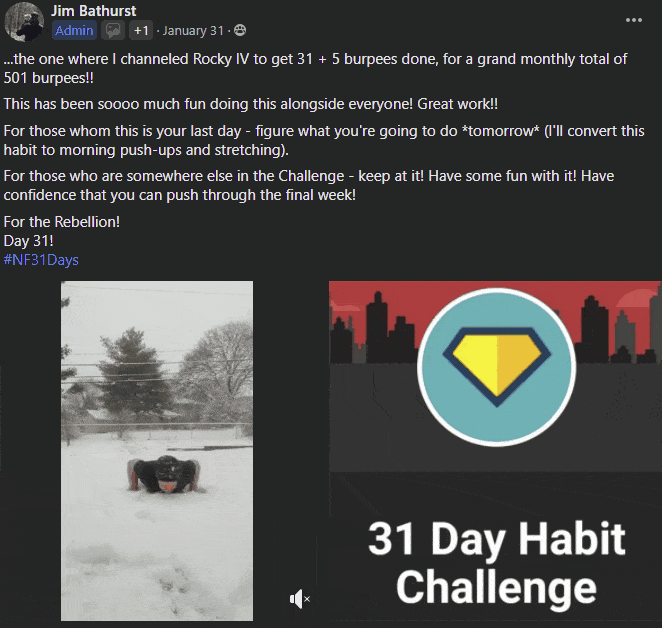
If you want to try out some of these experiences, you can sign-up for a free trial to our snazzy new app right here:
If you want some next-level accountability, I have to mention the ultimate power-up: hire a coach.
It could be a personal trainer in a gym, or you can go digital with an online coach.
Either way, having someone you check in with weekly (who will also program your workouts) is one of the best ways to exercise consistently.
If you know a coach will ask you about your workouts, you’re going to be more likely to do them.
If you’re interested in learning if you’d be a good fit for one of our online coaches, you can click on the big yellow button below:
Step 6: The Problems With Exercise and Workout Motivation
In the video above, Rebel Leader Steve outlines the problems with motivation.
I think all of my clients should watch the video.
That’s because I’ll often hear them say “I need more motivation to workout” or “I’m just not motivated to exercise.”
This is the wrong frame of mind.
Action creates motivation, not the other way around.
For example, let’s imagine a new client. They don’t particularly like working out and they aren’t very motivated to do it.
But they do it anyway.
Then, after a few weeks of successful workouts, they’ll start to recognize the trend they’ve begun.

Our coaching app tracks all the training we assign, so I’ll often see my clients rejoice when they’ve “hit 20 workouts!”
It feels good to recognize they’re making progress, which often makes them more motivated to exercise.
So they keep working out.
The problem: getting started in the first place can be tough.
That’s why you should start with ANYTHING that breaks the inertia.
Coach Matt breaks it all down for you right here:
As a beginner, your first step is the most important. And often the hardest.
That’s why in our Beginner’s Guide to Starting Your Fitness Journey, we recommend your first workouts should be walks.
It could be a half-mile around the block. Or it could be to the mailbox and back.
The exact amount doesn’t matter, but being intentional is. That’s how we work to build consistency.
So do a short walk today. Then another one the day after tomorrow. Then a third two days from then.
Boom, three workouts in one week, all by just walking.
Step 7: How to Find Time to Workout
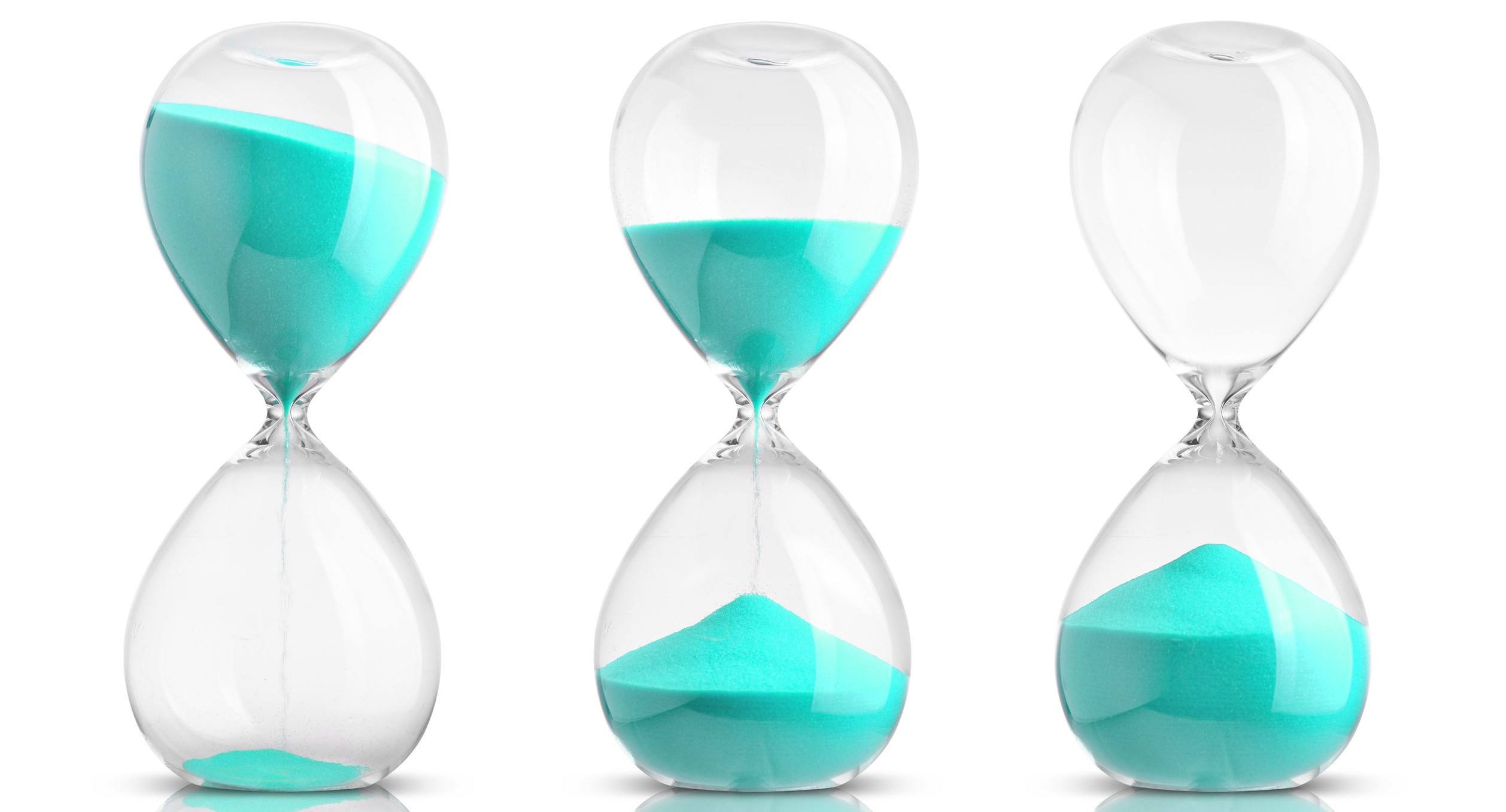
I’ll be real with you: no one is sitting around, twiddling their thumbs with time to kill.
If you’re going to make time to work out, you’ll need to figure out what activity in your life you can change or eliminate:
- Maybe your two-hour nightly TV ritual can come down to an hour.
- Maybe you start biking home from work instead of driving.
- Maybe you catch up with your spouse over an evening walk instead of a drink.
This is why scheduling your workouts in your calendar can be so critical – it helps you see what needs to be moved around to get your training done.
Also, it’s okay to experiment here.

If you create a schedule, and you don’t hit it all, it’s okay.
Perhaps you just created an unrealistic schedule.
If so, then modify the workout:
- Try a 30-minute workout instead of an hour.
- Try two workouts a week instead of three.
- Go around the block once instead of twice.
Again, we’re not worried about the amount of time here. Instead, we’re concerned about you hitting your workout schedule consistently. It’s okay to scale down to do that.
Once you’re rocking and rolling, we can always scale it up if it seems right.
If you want some tips on how to gauge your adherence to sticking with your workout schedule, then check out How to Track Your Fitness Progress.
Start Working Out Consistently
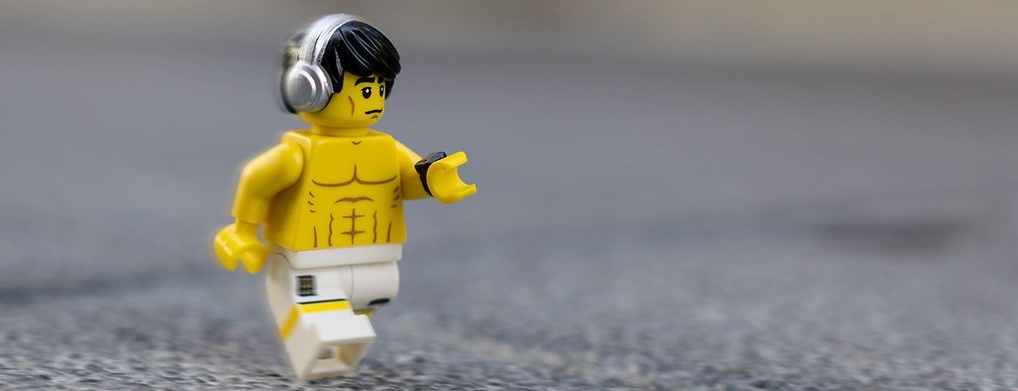
There you have it, my friend.
When it comes to working out consistently, remember to:
- Step 1: It’s okay to stumble (Forgive yourself). Everyone I know misses a workout here or there. It’s nothing to feel shame over.
- Step 2: Have a plan! Without scheduling your week’s workouts, how do you even know if you’re being consistent or not?
- Step 3: Have a backup plan! (Lose the “all or nothing” mindset). If your first plan falls through, nbd. Just move onto the next one. “Some” workout is always better than “no” workout. Do the best you can.
- Step 4: Make it fun. Your workout doesn’t need to be something you dread. If you like hiking, go hiking. If you like swimming, go swimming. Any movement is beneficial and should be encouraged. No one said you have to hate it.
- Step 5: Find an accountability partner. Going alone is almost always harder. If you can find a friend or coach to team with, it will make working out consistently easier.
- Step 6: Embrace “action” not “motivation.” If you have to wait around for motivation to start working out, you might be waiting for quite a while. You’ll become motivated after you act.
- Step 7: Don’t find time, make time. Your schedule won’t magically free itself. Look at your calendar and start prioritizing.
That’s it.
The most important thing you can do now today: START!
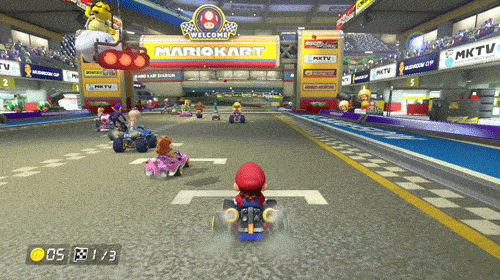
Not tomorrow. Not next Monday.
Today!
If you don’t know what to do, look at the next free spot on your calendar. Then schedule a walk.
Then schedule it a couple of days later.
Then the following week.
BOOM! You just started a plan for working out consistently.
As always, if you need any help here, we gotcha.
Here are three ways that Nerd Fitness can help you exercise regularly.
#1) Our Online Coaching Program: a coaching program for busy people to help them make better food choices, stay accountable, and get healthier, permanently.
As I said, this is the ultimate way to build workout accountability. Not only will a NF Coach build your workout, but they’ll check in with you too to make sure you’re able to do it.
If you can’t?
No problem, they’ll work with you to create a new plan.
You can schedule a free call with our team so we can get to know you and see if our coaching program is right for you. Just click on the image below for more details:
#2) If you want an exact roadmap for working out consistently, check out NF Journey. Our fun habit-building app tells you exactly what days to exercise, what days to rest, and helps you track it all so you know if it’s working for you.
Interested?
Try your free trial right here:
#3) Join the Rebellion! We need good people like you in our community, the Nerd Fitness Rebellion.
Sign up in the box below to enlist and get our Rebel Starter Kit, which includes all of our “work out at home” guides, our Strength Training 101 eBook, and much more!
- The 15 mistakes you don’t want to make.
- Full guide to the most effective diet and why it works.
- Complete and track your first workout today, no gym required.
Alright, I want to hear from you now:
What’s your biggest issue with working out consistently?
What tips helped the most?
Are we missing any helpful suggestions for a beginner?
Let me know in the comments!
-Jim
###
Photo Source: Rugby Player, Bruce Emmerling © 123RF.com, Firefighter, Dog Sitter, Bicycle, Toxic, choneschones © 123RF.com, Morning run with the Fitbit
The post How to Start Working Out (Consistently) first appeared on Nerd Fitness.

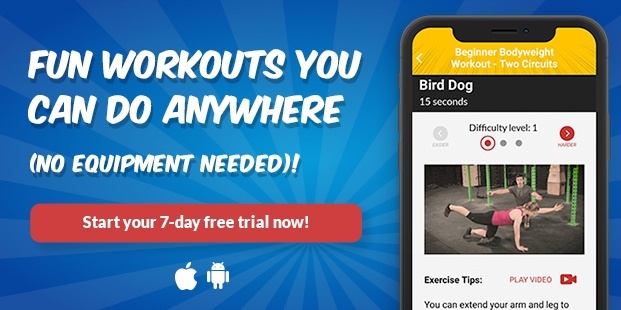

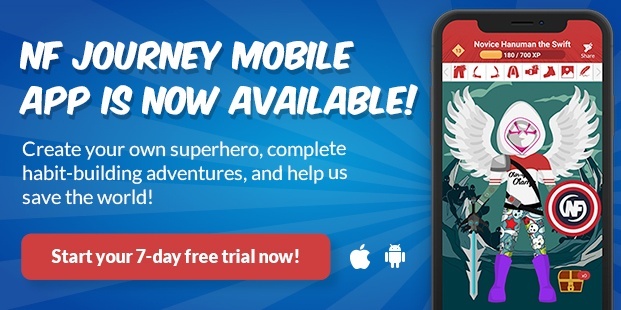
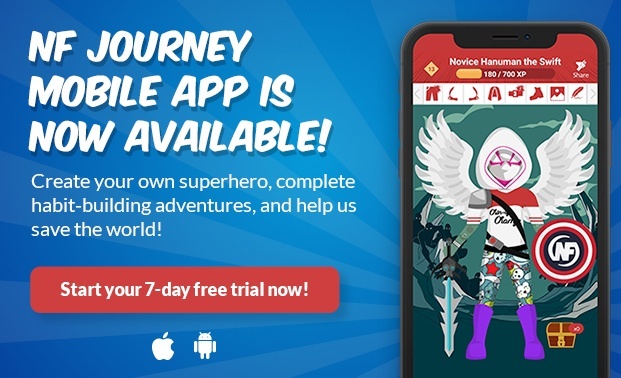
 Ten years ago, I ate a high protein diet. I
Ten years ago, I ate a high protein diet. I 
 When we talk about “getting enough electrolytes,” we usually mean the big three: sodium, potassium, and magnesium. There are many others, including calcium, chloride, and bicarbonate, but the big three are the ones targeted by supplement and sports nutrition companies.
When we talk about “getting enough electrolytes,” we usually mean the big three: sodium, potassium, and magnesium. There are many others, including calcium, chloride, and bicarbonate, but the big three are the ones targeted by supplement and sports nutrition companies.
 A lot of people use Cinco de Mayo as an excuse to hit up their favorite taco shop and kick back with a margarita, completely unaware of the historical significance. Did you know that May 5th marks the anniversary of the day that Mexico drove out French military in 1862? Now you know why you’re clinking your salt-rimmed glasses and piling on the guacamole.
A lot of people use Cinco de Mayo as an excuse to hit up their favorite taco shop and kick back with a margarita, completely unaware of the historical significance. Did you know that May 5th marks the anniversary of the day that Mexico drove out French military in 1862? Now you know why you’re clinking your salt-rimmed glasses and piling on the guacamole.



 This layered taco casserole is comfort food without a helping of regret. There are still layers of everything that make taco casserole great: tortillas, seasoned ground meat, chile peppers, cheese, and a mile-high topping of shredded lettuce, fresh tomatoes, avocado and green onions. But the tortillas are Primal- and Paleo-approved, the ground meat is grass-fed, and the cheese is high-quality aged Cheddar.
This layered taco casserole is comfort food without a helping of regret. There are still layers of everything that make taco casserole great: tortillas, seasoned ground meat, chile peppers, cheese, and a mile-high topping of shredded lettuce, fresh tomatoes, avocado and green onions. But the tortillas are Primal- and Paleo-approved, the ground meat is grass-fed, and the cheese is high-quality aged Cheddar.
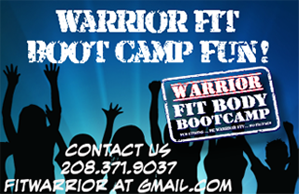 For now classes are 6pm and 640pm at 2840 Wildwood st in the Boise Cloggers studio.
Book your class NOW!
click this ==>
For now classes are 6pm and 640pm at 2840 Wildwood st in the Boise Cloggers studio.
Book your class NOW!
click this ==>


